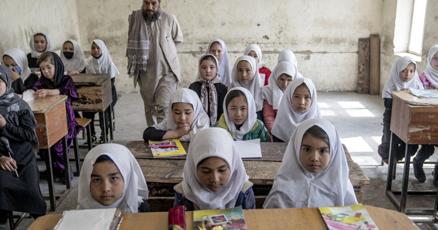As the G7 summit approaches in Muskoka, Canada is positioning education as the cornerstone of international peace and development efforts. After spending three weeks tracking diplomatic preparations across European capitals and Washington, I’ve witnessed firsthand how education has emerged as Canada’s signature priority for the upcoming talks.
“Education serves as both a preventive measure against conflict and a recovery mechanism in its aftermath,” explains Jean Lebel, President of Canada’s International Development Research Centre, during our meeting at their Ottawa headquarters. “What we’re seeing is a strategic shift in how G7 powers approach stability-building in fragile regions.”
The Canadian initiative seeks $3.8 billion in commitments from G7 nations to fund education programs in conflict zones and developing regions. This represents a significant increase from previous education funding packages, which have historically been overshadowed by security and economic concerns at high-level summits.
The proposal arrives at a critical juncture. UNESCO data shows that 222 million children and youth affected by crisis urgently need educational support. Among them, 78 million are out of school entirely, while others receive inconsistent or inadequate instruction.
Walking through the Za’atari refugee camp in Jordan last month, I witnessed the human reality behind these statistics. Makeshift classrooms operate in converted shipping containers, where Syrian refugee children study mathematics and languages while trauma counselors work in adjacent spaces.
“Education is not just learning to read and write; it’s about rebuilding identity and creating pathways to stability,” said Fatima al-Hassan, who coordinates educational programming at the camp. “Without this structure, we lose another generation to despair.”
The Canadian proposal emphasizes three key areas: education in emergency settings, girls’ education, and vocational training aligned with economic development. Each component addresses different dimensions of conflict prevention and post-conflict reconstruction.
Analysis from the World Bank suggests that each additional year of schooling increases a person’s earnings by approximately 10 percent while reducing their likelihood of participating in violent conflict. These economic benefits extend beyond individuals, strengthening community resilience against extremist recruitment and political instability.
“The return on investment for education funding is extraordinary,” notes Stephen Brown, professor of political science at the University of Ottawa. “For every dollar spent on quality education in conflict zones, we see roughly $15 in economic returns and conflict reduction savings.”
Critics question whether education initiatives receive sufficient protection in active conflict zones. During my recent reporting in eastern Ukraine, I observed schools operating in basements to avoid shelling, with teachers continuing lessons despite air raid sirens and frequent power outages.
The G7 proposal addresses these concerns by allocating 30% of funding specifically for education protection measures, including physical infrastructure hardening, digital learning alternatives, and teacher safety protocols.
Canada’s emphasis on education marks a departure from previous G7 priorities, which often centered on immediate crisis response rather than long-term stability building. The shift reflects growing recognition among security experts that educational voids create fertile ground for conflict.
“When education systems collapse, extremist groups often step in with their own schools and narratives,” explains Amanda Klasing of Human Rights Watch, whom I interviewed in Geneva. “We’ve seen this pattern from Afghanistan to parts of West Africa.”
The initiative faces political headwinds, however. Several G7 nations, including Germany and Italy, are experiencing domestic budget pressures that complicate new international commitments. During meetings with German officials in Berlin, I encountered concerns about balancing refugee education costs at home with international obligations.
Finance ministers gathering in preliminary sessions have debated innovative funding mechanisms, including education bonds and private sector partnerships, to bridge potential gaps between commitments and needs.
“We’re not just asking for traditional aid,” Canada’s International Development Minister explained during a press briefing I attended in Ottawa. “We’re creating a sustainable financing architecture that leverages private capital alongside public funds.”
The Canadian proposal has gained unexpected support from military establishments. At NATO headquarters in Brussels, defense analysts increasingly view education funding as complementary to security operations.
“Military operations address immediate threats, but education prevents new ones from emerging,” a senior NATO strategic planning officer told me, speaking on background due to diplomatic sensitivities. “It’s far less expensive to fund schools now than military operations later.”
As world leaders prepare to gather, education advocates remain cautiously optimistic. The Education Cannot Wait fund, which coordinates global education in emergencies, has documented successful interventions in 44 crisis-affected countries, demonstrating that progress is possible even in the most challenging environments.
The summit’s outcome will signal whether G7 nations are truly committed to addressing root causes of global instability rather than merely responding to crises after they emerge. For millions of children in conflict zones, the difference could determine whether their futures include opportunities beyond violence and displacement.
The peace and prosperity agenda that Canada champions begins in classrooms far from Muskoka’s pristine lakes – a reality that will test the summit’s substance beyond diplomatic declarations.






